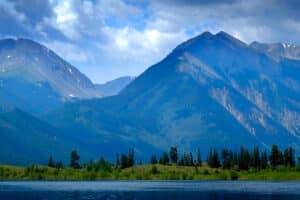Sooner or later — words I use a lot — gasoline in America will cost $8 per gallon. Which is what it costs today in Europe.
“Sooner or later” lends me a little erudition, which I don’t deserve, because whatever follows usually comes true. Not always, but often enough.
Eight-dollar gas is likely to happen, because the world’s population is growing and most of us will use more energy than before. The wealthier we are, the more energy — particularly, petroleum products — we consume. Countries that were low-petroleum consumers on a per-capita basis in the past — India, China, Saudi Arabia and others — are increasing their use.
At the same time, oil production is not keeping pace. Despite a 57 percent increase in price last year, the world’s 15 largest oil exporters — who make up about 45 percent of all supply — shipped 2.5 percent less, according to the U.S. Department of Energy.
When price goes up, supply is supposed to go up. So why isn’t oil supply going up?
One answer is that the world has little excess supply capacity. Most of these extra spigots are in the Middle East where there’s either no incentive to open them or no ability.
The other answer is that the world is not finding and developing new oil supplies fast enough to offset the depletion of existing fields and match increasing demand.
Peak-oil theory is the idea that production from the world’s finite oil resource has increased during the last 125 years to an apex and will now begin to decline, despite higher prices. America passed its peak-oil point 35 years ago; Kuwait and Saudi Arabia will pass theirs in five or six years. And even if production does perk up for five or ten years, demand growth will exceed supply, thus boosting price at the pump and everywhere else.
As long as global demand continues to grow, it will outstrip supply sooner rather than later. More supply simply keeps the problem around longer and gives us some room to change.
Unfortunately, we will still run out of oil — a finite resource — even if we cut global demand to what we were using ten or 20 years ago. Finite means there’s a last drop, just like in a cup of coffee. It also implies a point where it’s too costly to pump out the next barrel.
Some petroleum demand is what economists call, price-sensitive. At $4 per gallon, Americans are using a bit less than at $3. But price sensitivity can take us only so far because all of us are locked into petroleum fuels for essential movement and other needs. Reducing our oil use takes a little sting out of the bite of $8 gasoline. But our oil dependency won’t change until we change the degree to which we need oil-based fuels.
One way out of these handcuffs is to shift as much of our capital stock — cars, trucks, railroads, heating plants and so on — out of petroleum and into electricity. That will allow us to reduce oil consumption and oil imports. We can husband oil for its highest and best uses, stretching it as far as we can.
Facing a flood, Noah had the good sense to build an ark. Why do we continue to enlarge our cellar?
Most of our electricity uses coal, petroleum, natural gas or nuclear power to boil water to make steam to turn a turbine. It can also be generated using non-fuel energies, such as solar, wind and hydro, among others.
All things considered, I think nuclear power along with whatever renewables we can patch in are the best ways forward for producing U.S. electricity over the next 50 years. Electricity gives us a way out of oil dependency and transition time to tinker out future energy technologies.
An electricity-based economy with a low-pollution footprint will not be cheap to build or operate. We have no cheap electricity technology. Nuclear power’s problems are more manageable in my opinion than coal’s, its principal rival. We need to make the wisest choice from among expensive, imperfect transition alternatives. Our national energy policy for 30 years has been to refuse to choose.
In the meantime, higher-price gasoline is our fate. Continuing our oil economy will change much of where we live, how we work and what we do.
Suburbs that were built for long car commutes will be left to the rich who can afford $8 gas and the poor who will be re-ghettoed out of their increasingly valuable urban neighborhoods.
People will re-house themselves in barbell patterns, concentrating in more rural areas and more urban areas, linked by highways through thinned-out suburbs.
Jobs will move away from sprawled metropolitan areas to smaller cities and towns where commuting is less costly. Blue collar and middle-class workers will move closer to their workplaces. New jobs will cluster within old cities where the cost of living is relatively cheap and economic and cultural infrastructure lingers from the past. Think Pittsburgh.
Working from home will become increasingly less exotic.
High energy prices will move people back to the countryside for one reason above all others: It is now — and will be in the future — cheaper to live here. Oil at $250 a barrel and gasoline at $8 a gallon will increase the basic cost of living for everyone everywhere, but the cost will always be higher where it’s already higher and lower where it’s already lower.
Even though rural areas now depend heavily on petroleum fuels, the total cost of country living — with the exception of certain steroidal second-home and retirement enclaves — is significantly less than in suburbs and cities. As employment is decentralized, life beyond the suburbs becomes both cheaper and more feasible.
Boomers and their descendants will turn their second homes into first homes to the extent that telecommuting is practical and gasoline commuting is not.
More and more Americans will choose to be middle-class in the country than scrape-by, oil poor in the suburbs.
Farming will have to ease out of petroleum-based agriculture. Farm productivity may fall as a result, which means more land will be drawn into farming to produce food for a growing population. Farmland will appreciate, even the not-so-good stuff.
If we shift away from an oil economy, our future — though difficult — is likely to be safer, more predictable and wiser.
And if we don’t, it will happen anyway, sooner or later.
This content may not be used or reproduced in any manner whatsoever, in part or in whole, without written permission of LANDTHINK. Use of this content without permission is a violation of federal copyright law. The articles, posts, comments, opinions and information provided by LANDTHINK are for informational and research purposes only and DOES NOT substitute or coincide with the advice of an attorney, accountant, real estate broker or any other licensed real estate professional. LANDTHINK strongly advises visitors and readers to seek their own professional guidance and advice related to buying, investing in or selling real estate.









Add Comment